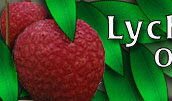Best Practices for Growing Lychee Trees
By Bill Mee
There are two "rules of thumb" I have learned to follow after two decades of growing lychee trees.
- Provide good wind protection.
- Provide a growing environment consisting of organic mulch and organic compost.
These basic principles apply universally, whether you are a dooryard grower or a grove owner.
In the following discussion I will elaborate on both concepts.
Lychee trees grow in recurrent flushes of growth followed by periods of dormancy.
Depending on the ambient temperature and availability of nutrients the dormancy phase of the growth/dormancy cycle can be shortened down to almost nothing, thereby resulting in an almost continuous growth phase.
The new growth on a lychee tree consists of very delicate leaves which emerge (if the tree is healthy) as a wine red flush,
becoming darker green as the growth hardens off.
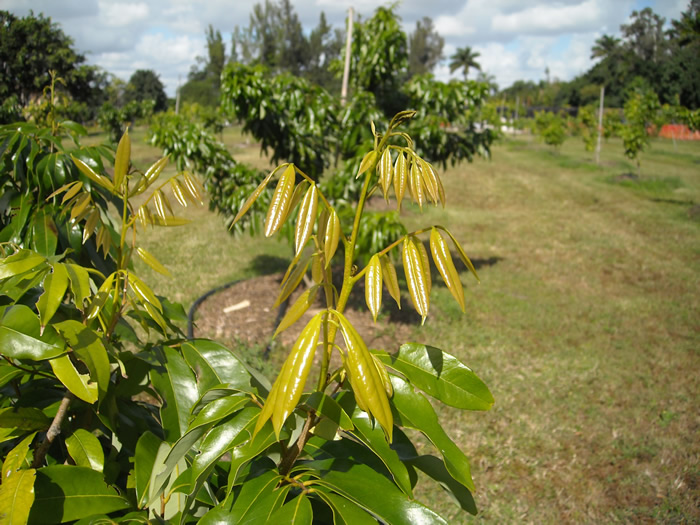 Figure 1: Delicate new lychee growth flush
Figure 1: Delicate new lychee growth flush
This delicate new growth is easily damaged by wind and the damage becomes progressively worse as the wind speed exceeds 15 mph.
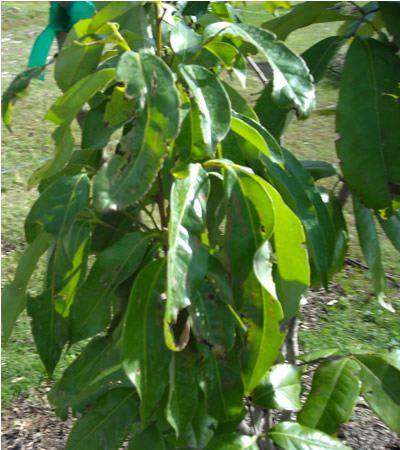 Figure 2: Wind damaged leaf
Figure 2: Wind damaged leaf
Lychee trees must re-grow new leaves periodically as the photosynthetic capacity of the leaf diminishes with age. If all or some of the new growth becomes damaged the production of photosynthetic exudates will decrease, which will slow the expansion of the root system. An abbreviated root system will not support much of a canopy. This is why trees grown in a container can only attain a limited size.
In the photos shown below the size difference between the protected side and exposed side of a small grove are very apparent.
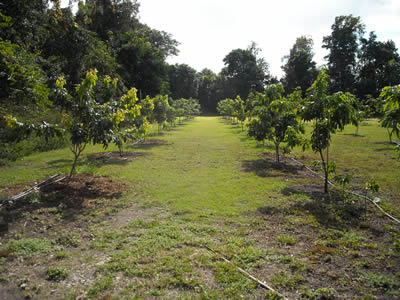 Figure 3: Protected Side of Grove
Figure 3: Protected Side of Grove |
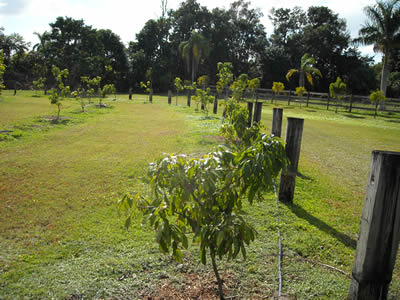 Figure 4: Exposed Side of Grove
Figure 4: Exposed Side of Grove |
Grove planted trees, more directly exposed to the prevailing winds,
almost always grow more slowly than the interior trees.
In Florida the prevailing winds are from the East (NE, East, SE) with an occasional west wind accompanying an approaching cold front.
If you are a Florida homeowner or a grove owner you should organize wind breaks on the eastern exposure and in some cases as in a grove, install shade cloth windbreaks at regular intervals between rows.
One alternative is to plant a "living" windbreak. This can be fast growing bamboo or bananas. We like the usage of bananas as they provide both some level of wind protection and the organic material they throw
off can be added to the mulch around the base of the tree. The only problem with bananas is that they will eventually cast excessive shade on the trees and will have to be removed.
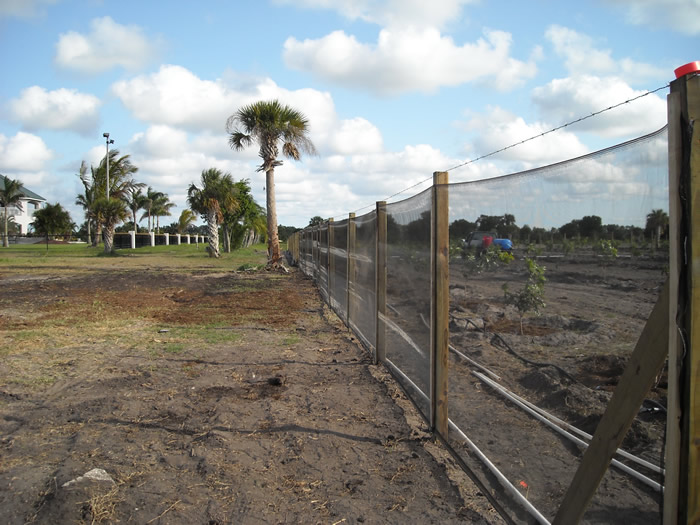 Figure 5: Artificial Shadecloth Windbreak Installed at One End of a New Grove
Figure 5: Artificial Shadecloth Windbreak Installed at One End of a New Grove
There are several informative articles on this website www.lycheesonline.com which deal with the advantages of using organic methods in the culture of lychee trees. The most important article is the http://www.lycheesonline.com/soilbiologyprimer.cfm by Elaine R. Ingham .
This landmark article is effectively the "Bible" of organic farming (gardening) and should be read by anyone considering organic techniques.
The concept of the "Soil Food Web" is fundamental to all organic growing methodologies. A healthy soil ecosystem directly impacts the root system of a tree and this is especially true for lychees.
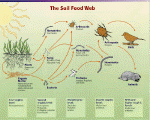 Figure 6: The Soil Food Web
Figure 6: The Soil Food Web
As I have often described, lychee trees originated in mountain rain forests in Southern China, Thailand and North Vietnam. The soil ecosystem of the sub-tropical mountain rain forest is extremely complex making the relationship between soil organisms that convert nitrogenous organic material into a form of nutrition which can be utilized by the tree is equally complex.
It is not surprising that when the soil environment surrounding the rhizosphere (root zone) of a lychee tree approximates that encountered in the primal mountain rain forest environment the trees thrive and grow rapidly.
There are two basic components comprising a healthy organic soil environment. Mulch and compost are the two essential elements that comprise a healthy organic soil environment.
We define mulch as the slightly decomposed material that results from shipping/shredding tree leaves branches and trunks. Most landscape and tree maintenance companies use industrial machines to process tree parts.
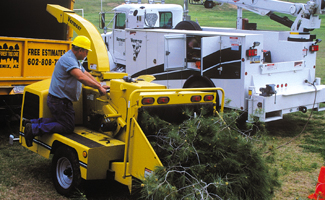 Figure 7: A Vermeer Industrail Chipper
Figure 7: A Vermeer Industrail Chipper
To get an idea of grove mulching and its' benefits see http://lycheesonline.com/photolist.cfm?cid=19
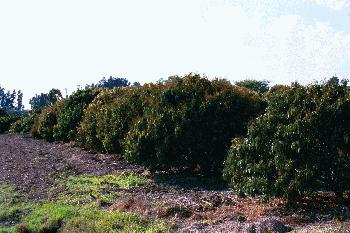
Figure 8: Grove Mulching on a Large Scale
|
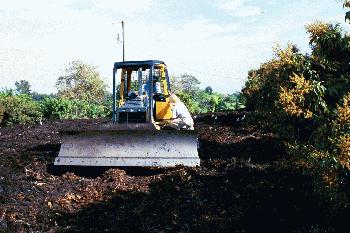
Figure 9: Bulk Mulch Spreading
|
A "good" mulch strikes an even balance between woody material that decays slowly and rapid deteriorating leafy material which is a primary nutrition source for detritivores. Earthworms are an example of a detritivore, which are major decomposers of dead and decomposing organic matter. They derive their nutrition from the bacteria and fungi that grow upon these materials. They fragment organic matter and make major contributions to recycling the nutrients it contains. Earthworms stimulate microbial activity, mix and aggregate soil, increase filtration, bury and shred plant residue and provide channels for root growth.
Mycorrhizal fungi, an important soil organism (mushrooms are the reproductive fruiting body of mycorrhizae) , thrive on the slowly decaying woody residue. The presence of soil Mycorrhizal fungi can greatly enhance the absorptive capacity of the root system.
To learn more about soil microbes and their importance, read the informative article by professor Emeritus Al Will http://lycheesonline.com/MicrobialRevolution.cfm
We characterize organic compost as deteriorated vegetative matter. As depicted in the photo below the discarded material from your kitchen or garden. that otherwise would be consigned to the garbage disposal. This material is actually a very valuable resource of "fast" nitrogen, which can be used to "feed" the soil food web and indirectly the root system of your lychee tree.
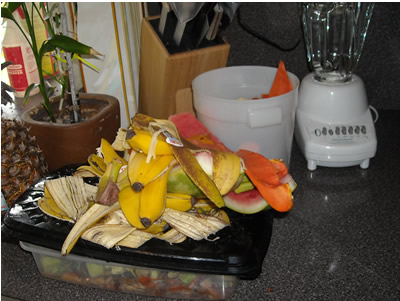
Figure 10: Typical Organic Kitchen Waste
|
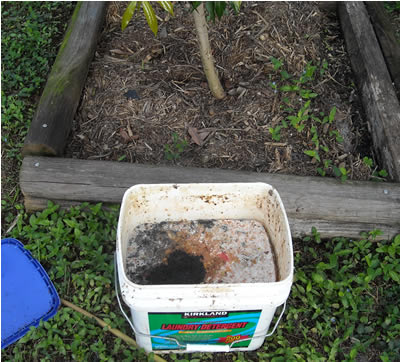
Figure 11: Organic Kitchen Waste Shredded
|
Many types of organic composters are commercially available. Composters which can conveniently be rotated and have internal aeration, which enhance aerobic bacterial decomposition, are especially effective. A plastic bucket with a cover will also do the job.
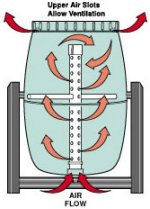
Figure 12: Compost Tumbler Cross Section
|

Figure 13: Compost Tumbler
|
The mulch applied around a lychee tree should be spread out past the drip line to a distance of 3-4 feet for a 3 gallon sized plant.
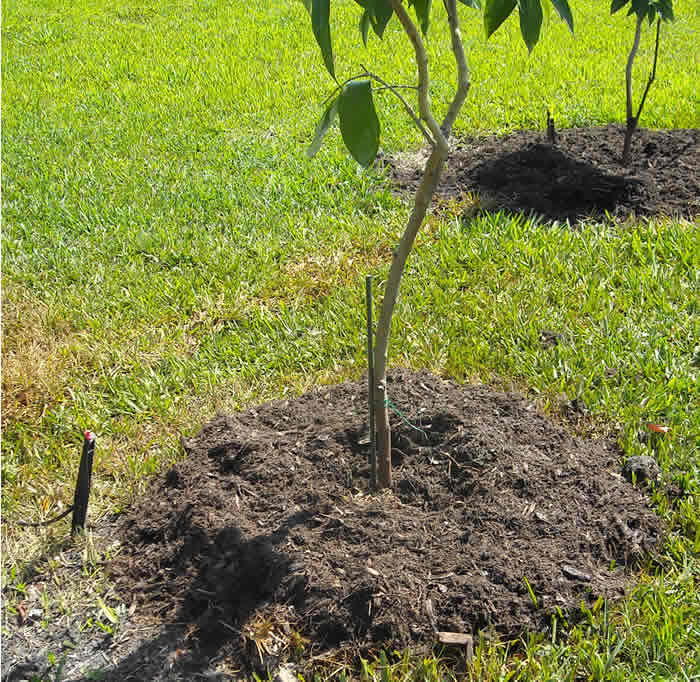 Figure 14: Properly Mulched Tree
Figure 14: Properly Mulched Tree
This mulch provides an organic environment which retains moisture and maintains soil temperature. To demonstrate the effectiveness of this mulch go ahead and move some aside. Underneath, you will notice earthworms, various arthropods (springtails, orbatid mites, centipedes, millipedes etc.) and the presence of numerous microscopic organisms (not visible) such as protozoa, nematodes, fungi and bacteria.
The root system of the lychee will extend out under this layer of mulch and as the roots expand, the canopy will increase proportionally in size.
In the photo below you will observe a tree in a 3 gallon size container and a tree in the ground.
Both of these trees were from the same batch of air layers and are the same age.
The difference is that the tree in the ground has been there 8 months and it has been wind protected, mulched and fed with organic compost.
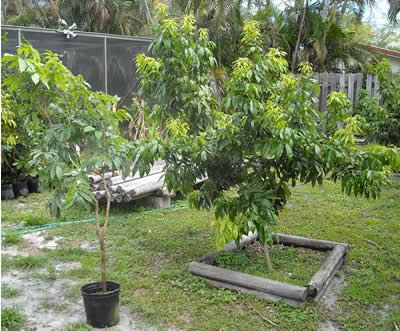
Figure 15: Three Gallon Tree (Sweetheart) next to Protected/Mulched Tree
|
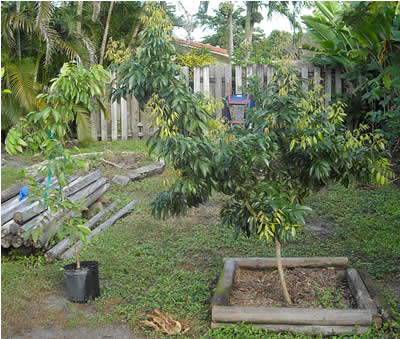
Figure 16: Same Tree 4 months prior
|
The following photos illustrate the stark contrast between two trees of the same age. One has been grown in a protected
area and the other was grown in an exposed grove without mulch or organic fertilizer.
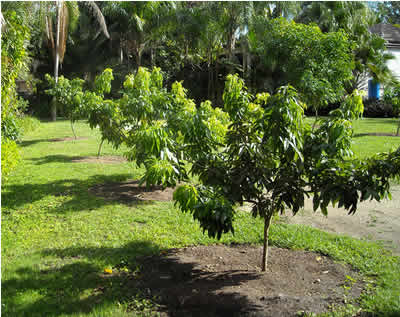
Figure 17: Wind Protected Lychee (Sweetheart) Grown with Organic Compost
|
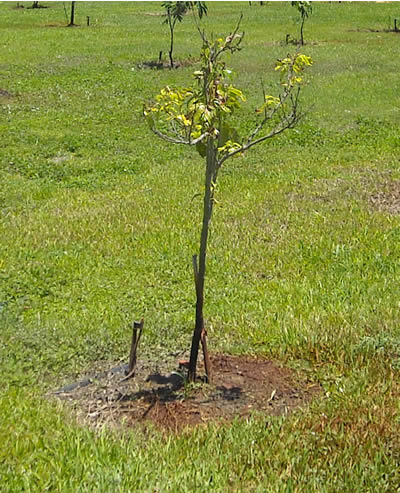
Figure 18: Unprotected Lychee (Sweetheart) No Mulch/No Compost
after 1 year
|
The conclusion should be fairly self evident.. Many people ask me about getting a larger tree because they do not want to wait several years until the tree is of a sufficient size to yield fruit.. If you can provide the right growing conditions your lychee can be of fruiting size in one year after planting.
This article was last updated on: April 30, 2010
|
|
|
Copyright © 1999-2010 Lychees Online
info@lycheesonline.com www.lycheesonline.com (954)648-6020
| 